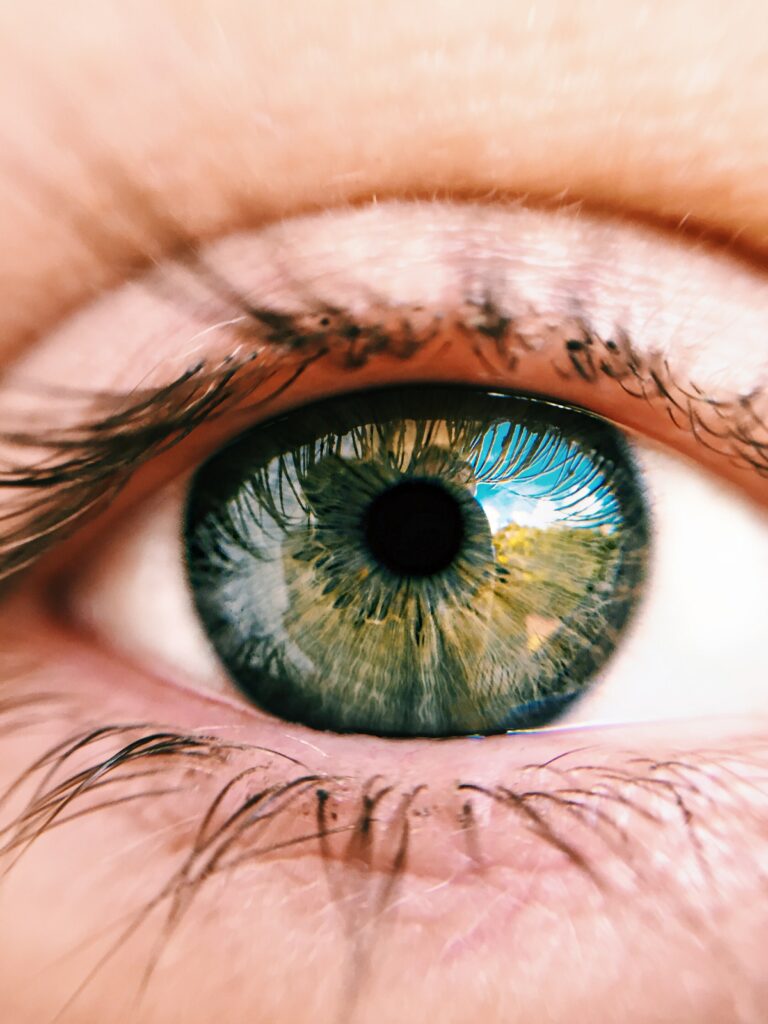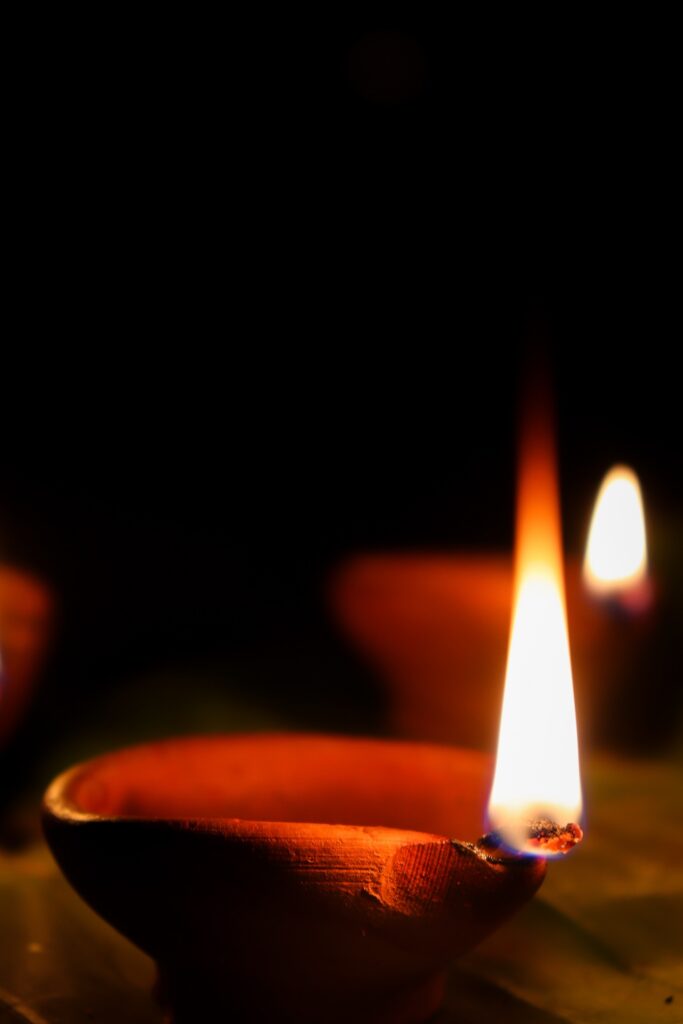

Regular practice of Tratak Kriya improve your vision. For someone who practices traṭak from childhood, it is not necessary to wear glasses during his life.
Tratak Kriya, simply Trataka or Tratakam, is one of the six practices of yogic purification (Shatkriya). It is used in Hatha Yoga and also in Tantra yoga practices.
Trataka: the concept behind the practice
Blinking in the waking state is common to all animals. When you stare at an object, blinking occurs on its own. Tratak is the practice of staring at an object without blinking until tears flow. The ancient sages of India incorporated it into the system of yoga.
Blinking is the act of Prana, the life force. The activity of Prana is directly related to the activity of the mind. When Prana moves, the mind also moves. Likewise, when Prana stops, the mind also stops.
There are five types of Prana which deal with the main functions of the body and also five types of sub-Prana which deal with auxiliary functions.
Kurma is one of the five auxiliary Pranas or Sub-Pranas. The main function of Kurma Prana is blinking. Blinking occurs automatically when Kurma is active. If we stop blinking, the Kurma stops working. Therefore, the mind also ceases to function. This is the concept behind the practice of Tratak Kriya.
What types, practices and benefits of traṭak?
The eyes, one of the 5 senses, by which the spirit experiences the exterior, that is to say the material reality, presents the graphic and visual details of this external reality to the spirit.
All five senses (nose, smell, skin, touch, tongue, taste, ears, sound and eyes, sight), generate a vision of the outside world. They present the same reality but from their individual point of view.
Spirit constructs the final reality by convincingly overlaying this five-pronged information on the same perception: outer reality.
The real eye is the bundle of nerve cells known as the optic nerve located between the retina and the brain where the actual image is constructed using signals received by the externally visible oval-shaped eyeballs.
The eyes are the most important sensory organ for man since 80% of the information collected in his environment, essential to his survival, is received by the eyes.
It is therefore very important to provide proper care and maintenance of eye hygiene.
Yoga offers a number of techniques that describe ways to keep the eyes healthy for as long as one lives.
I invite you to practice the techniques regularly to take advantage of the resulting benefits.
What is Trataka?
As already said, but repeating is learning 😉, Trataka is a yogic cleansing (a shatkarma) and tantric meditation method that involves staring at a single point such as a small object, blackhead, or candle flame. It brings energy to the third eye (ajna chakra) and promotes various psychic abilities.
This consists of central fixation of the sight, looking at or focusing the sight on any object.
The mind has an important role in what we see. The eyes only follow thoughts. It is possible to read a multitude of feelings just by looking the eyes from someone.
To do Trataka, the mind must be trained to focus for longer intervals of time in order to keep the gaze fixed on an object.
How to practice Trataka:


You can use those objects cited below to fix your gaze:
- on the flame of a candle,
- a point,
- the sun
- the moon,
- the vegetables,
- the Om symbol,
- a circle,
- the tip of his nose
- etc.
There are approximately 36 items that can be used to perform Tratak. The safest are the moon, the flame of the candle and contemplation of the thumb.
Ideally, Trataka is best done in the morning or evening on an empty stomach.
If you’re a beginner, you might be able to keep your eyes open without blinking for 15 seconds or so. After a while, you may increase this as stamina allows. Some people will moon gaze for ten or fifteen minutes without blinking.
Look at the sun : Surya Tratak
The sun is a great source of Prana, life energy. Looking at the sun provides a lot of Pranic energy.
It is necessary to start the practice at the FIRST RAYS OF THE RISING SUN or at the rays of the setting sun. Only two or three minutes in the first rays of the sun are recommended. More than that, you risk incurring harmful radiation.
When you look at the sun, imagine that the pranic energy is coming from the center of the sun towards your eyes in a straight line and filling your body with Prana. Imagine that your body shines like the sun full of Prana. Similarly, imagine that your exhale reaches the center of the sun and you inhale directly from the center of the sun. It heals every cell in your body.
Moon glazing:
The moon itself is a powerful meditation object because of its influence on the subtle psychic energy and dream functions. People who are very sensitive tend to be quick to notice this.
Moon gazing can be practiced on a clear night, very beneficial during full moon nights.
Keep your eyes relaxed, do not stare too hard, and avoid blinking as much as possible throughout the observation period.
Why gazing at the moon is good for the eyes?
In Ayurvedic medicine, moonlight is believed to help heal and soothe the body.
The moon gently energizes, in contrast with the sun’s sharp brightness. Moonlight exposure is thought to also relieve anxiety and stress and improve relaxation by prompting the natural release of melatonin.
Ayurveda holds that moonbathing (or moon gazing) may have particular benefit for females, since the moon is thought to help increase fertility and lead to more regular menstrual cycles.
- Relief from insomnia
- Remarkable concentration abilities
- Correction of eye problems such as myopia, farsightedness and the early stages of cataracts (I haven’t verified this, but it’s a common claim)
- Development of the third eye and intuitive abilities
- Deep relaxation and many of the other benefits you receive from meditation
How to contemplate the flame of a candle?
Contemplating the tip of a candle flame is another way to practice Trataka.
A simple wax candle or basic lamp with a wick immersed in ghee or any oil will suffice.
Sit in any meditative posture: Siddhasana, Sukhasana, etc.
- Place a lit candle 40-50 cm in front of you in line with the eyes, not at any angle to them, the neck should not turn to either side.
- Adjust according to your needs and comfort. A dark environment will help focus on the flame better
- Keep the flame at eye level.
- The candle should be placed directly in front,
- The flame must be stable and not waver (avoid drafts and wind).
- Close your eyes and try to focus on the breath for a moment to be in the present.
- Keep the body relaxed, straight and the spine straight
- Fix the gaze on the smallest possible area at the end of the flame and stabilize the gaze with the will. The quality of the gaze is inversely proportional to the area on which the gaze is fixed
- Keep your eyes relaxed and avoid blinking (the eyes will naturally adjust to the glare in a while) as much as possible until they become watery.
- After which close your eyes for a while and try to create the afterimage of the flame in the closed eyes.
The clarity of the after image depends on the quality of concentration with which the gaze has been practiced.
Once the image disappears, take a few breaths with your eyes closed and then open them slowly
Apply the heat generated by your previously rubbed palms to your closed eyes to further relax them
Start with a minimum duration of one minute, then gradually increase to ten minutes or whatever is comfortable according to your abilities.
Advantages of staring at the candle:
- Eyesight is improved
- Eye muscles are strengthened
- Improves concentration, intelligence and memory
- Prepares the mind for meditation as it induces deep focus and concentration
- Improved self-confidence, willpower and patience. What makes you efficient and productive in whatever is undertaken
- The mind slows down, calms and leads to inner peace
- Decision making becomes positive due to improved clarity of thought.
- All mental afflictions are alleviated with improved attitude.
- Alleviates insomnia or induces drowsiness, effective tool in the fight against headaches
- Relieves daily stress
Gheranda Samhita even mentions acquiring the ability of clairvoyance as one of the benefits of candle contemplation.
How to contemplate the tip of his nose?


Nasikagra Trataka is looking at the end of your nose.
One can sit in any comfortable posture, keeping the spine and neck straight.
Now fix both eyes on the tip of the nose for one to two minutes. Repeat this several times, taking rest intervals with your eyes closed in between.
Look between the eyebrows or Bhrumadhya Trataka
Sit comfortably with your torso and neck straight.
Fix the gaze between the center of the eyebrows for one to two minutes, then relax the eyes by keeping them closed for a few seconds. Repeat this operation several times.
This eye exercises technique is also known as Shambhavi mudra.
Looking between the eyebrows stimulates the olfactory and optic nerves which in turn energize the central and autonomic nervous systems.
The brain is soothed and generates a feeling of calm. Then, the mind and the eyes are closely linked, the state of the mind is reflected in the eye movements: a restless mind will also have a restless eye and vice versa. It also helps activate the Ajna Chakra.
Look at the right shoulder: Daksinajatru Trataka
Look at his right shoulder (look at the end of the right collarbone). Keeping your body straight, your neck steady, fix your gaze on the tip of your right shoulder. Take care that the neck does not move or twist towards the right shoulder as only the eyeballs turn towards it. Stay in this position for a minute to two minutes before closing your eyes to relax them.
Look at the left shoulder: Vamanjatru Trataka
The left shoulder gaze is done in the same way as explained above for the right shoulder gaze, the only difference being that here the gaze is fixed on the left shoulder instead of the right shoulder .
With regular practice you will achieve a certain level of efficiency and stability in these practices.
The last four Trataka practices can be performed in a sequence with equal durations.
What to do or not to do after trataka?
- Wash the eyes with cold water to stimulate blood circulation after the Trataka is finished.
- Do not use any externally applied eye medication after practicing Trataka
- Contraindications
- People with schizophrenia should avoid doing Trataka or do it only under the guidance of an expert.
Conclusion
Trataka sessions improve working memory, spatial memory, and spatial attention.
Tratak is just the outside help you need to focus your mind.
If you pass the Trataka, the next steps will unfold on their own.
If you meditate on a specific object consistently, the object reveals itself. Such is the power of meditation.
The Trataka kriya makes it possible to achieve this.
Regular practice of Tratak Kriya gives you healthy and shiny eyes. For someone who practices traṭak from childhood, it is not necessary to wear glasses during his life. The sight becomes comparatively sharper than that of those who do not practice. For a person who wears glasses, the number of glasses will not increase.
Through the practice of traṭak, a practitioner can activate the chakras and raise the Kundalini. But this requires the advice of a guru.
Similarly, many siddhies can be attained during the traṭak sadhana. This may vary from practitioner to practitioner. However, he should not give them importance. Likewise, it should not be practiced for the purpose of reaching the Siddhies. They become the cause of distress rather than doing good.
Accomplished yogis can perform Shaktipat and cure disease by performing Tratak on the diseased part of a person.
